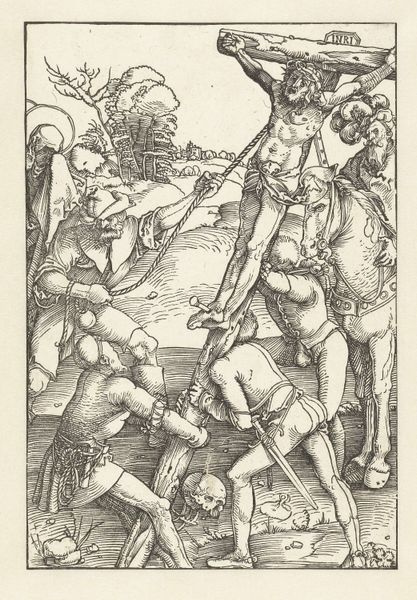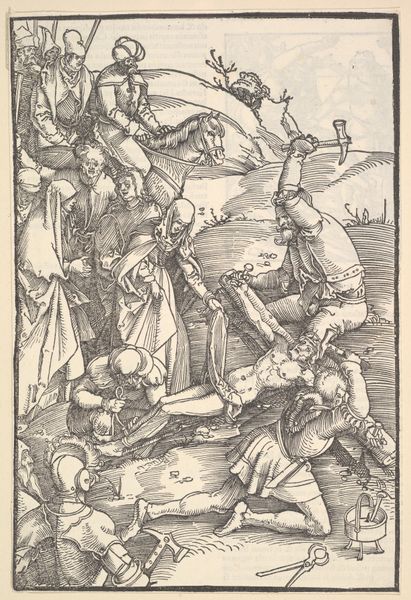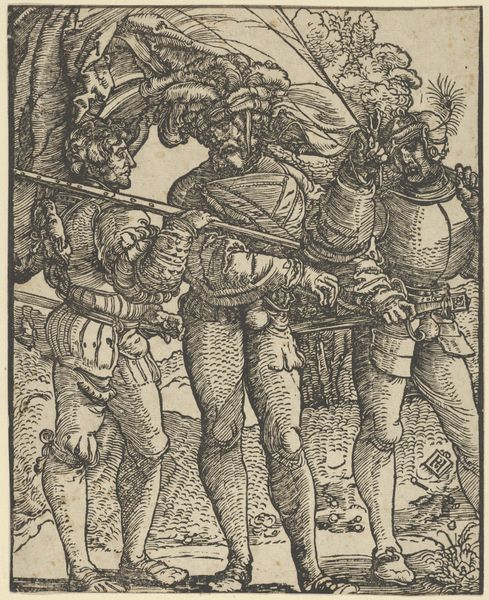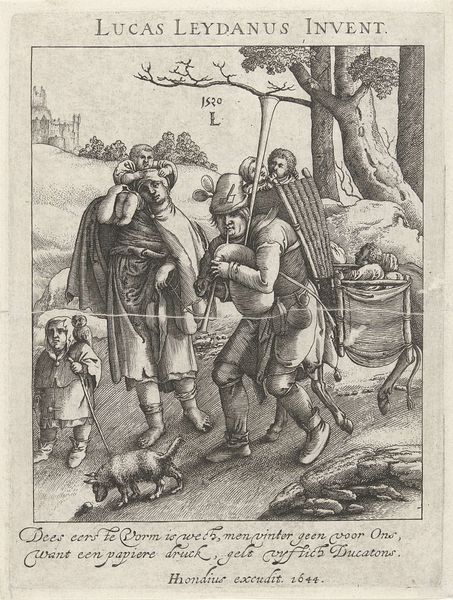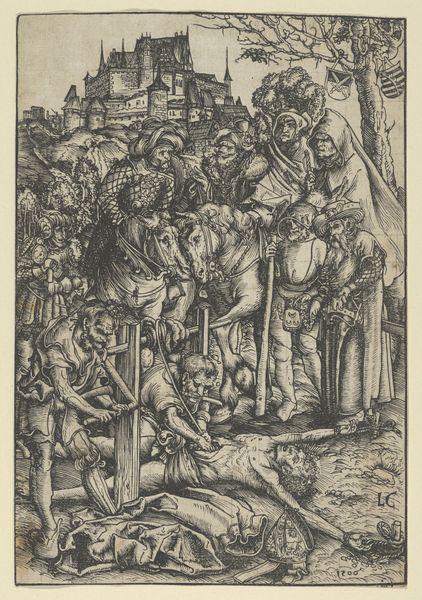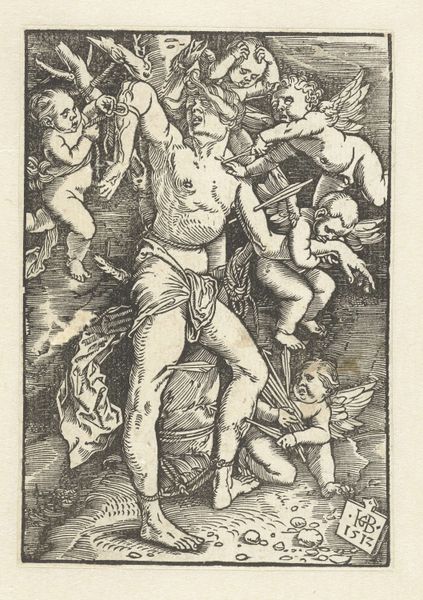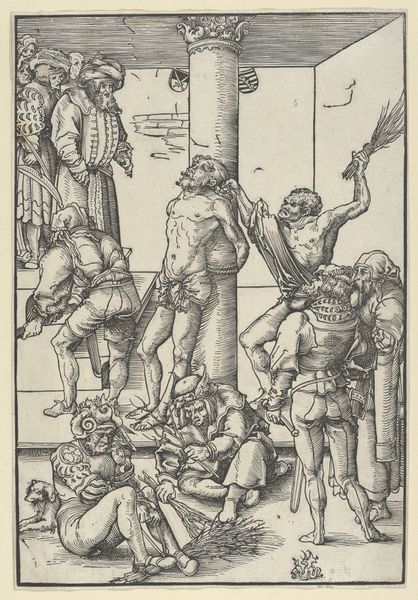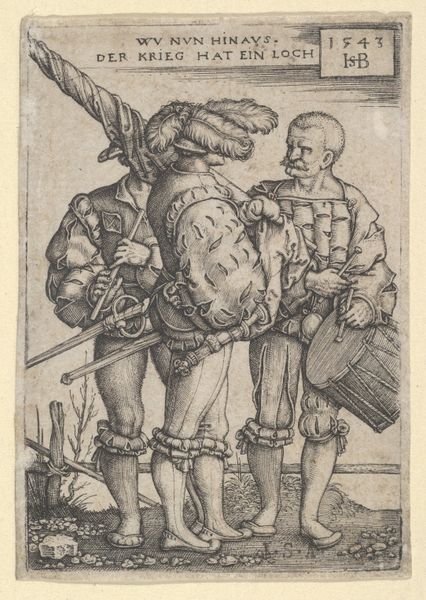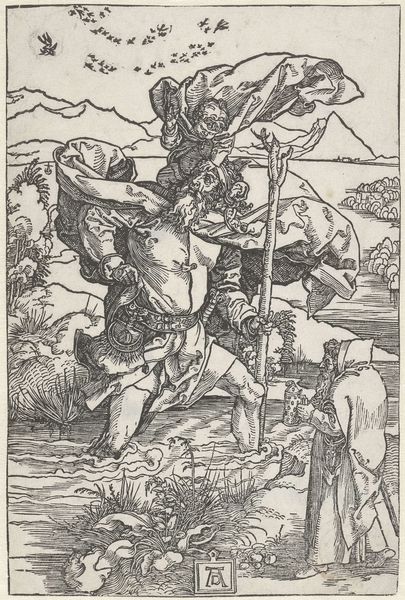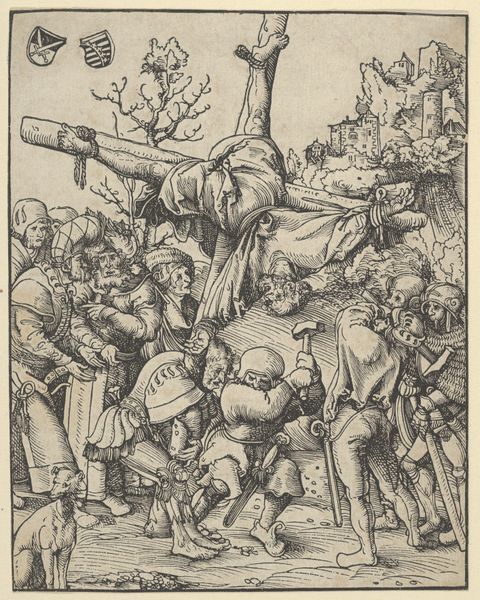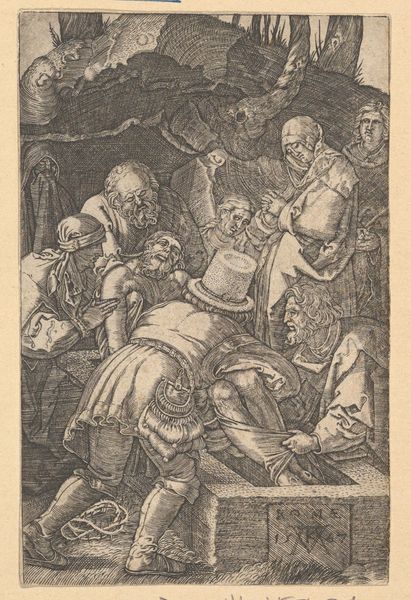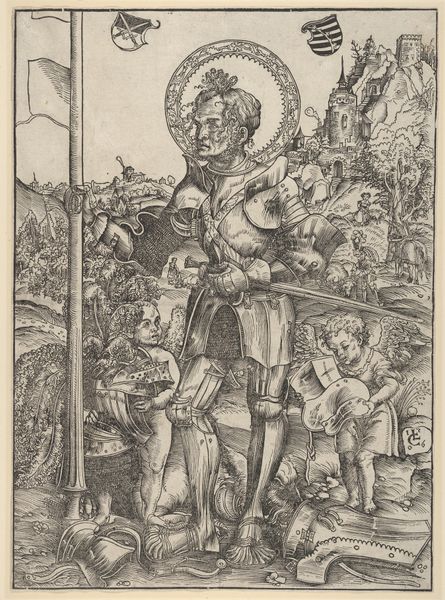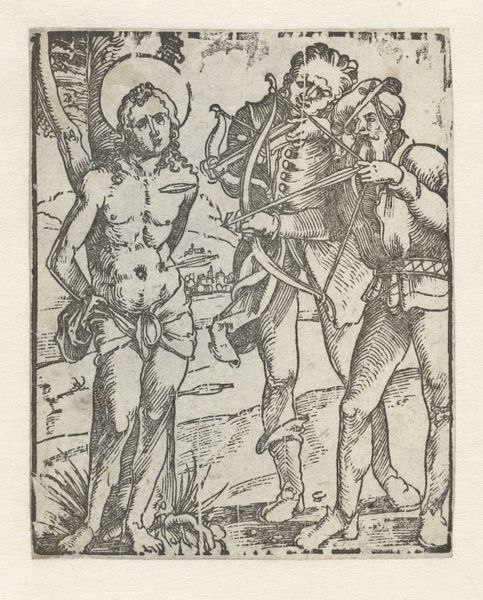
drawing, print, woodcut
#
drawing
#
narrative-art
# print
#
figuration
#
soldier
#
woodcut
#
northern-renaissance
Dimensions: Sheet: 8 1/4 × 6 3/8 in. (21 × 16.2 cm)
Copyright: Public Domain
Curator: Here we have "Three Soldiers with Muskets," a woodcut by Hans Schäufelein, created sometime between 1506 and 1516. It's currently held at the Metropolitan Museum of Art. What’s your initial take on it? Editor: Claustrophobic! They're packed so tightly, it feels like they're all sharing the same thought bubble—a dark one, given the times. The textures, though, wow, the scratchiness almost vibrates. Curator: That compressed feeling is interesting. Notice how the soldiers overlap, obscuring parts of each other, almost becoming a single, unified force? Their weaponry certainly contributes to that. These early muskets weren't particularly accurate or easy to handle. So, the group dynamic was essential. Editor: Like they’re literally leaning on each other to make sure their shots even land in the same century. What do you read in their faces, or what little of them we can see? The one in the middle looks terrified. Curator: Fear, certainly. But I also see a sort of resignation. Military service during the Renaissance, especially for landsknecht soldiers like these, was brutal and often short. The imagery—the landscape looming in the background, the detail in their garments, the weapons— speaks volumes about mortality and the ephemeral nature of earthly power. Think of it as a dance with death. Editor: A sweaty, uncomfortable dance. It makes me wonder what story Schaüfelein was aiming to tell, because the execution is so deliberately... heavy. Is there a broader moral being illustrated, beyond just "war is bad"? Curator: Absolutely. Look closely at their attire and the accoutrements they carry. These were often laden with symbolic meaning. Certain colors, designs, even the way a pouch was worn, could denote allegiance, rank, or even personal history. I see wealth, pomp and power, contrasted with the grittiness and vulnerability. Perhaps Schaüfelein critiques vanity, and the transient nature of human achievements. Editor: Hmm, yes. Vanity, caught mid-march. So they're strutting, scared, and destined for dust, all at the same time. Bit like life, isn't it? Curator: Precisely! The artist condenses these potent realities into a single frame. It allows us a peek into a specific time but also offers echoes of truths still relevant. Editor: Schaüfelein definitely left us with more questions than answers, didn't he? Though I can't imagine the man himself knew what to make of his "Three Soldiers," I have found new insight into our reflection as a species in a constant state of battle within and without. Curator: Indeed, his rendering leaves enduring reflections—echoing how historical observations and their rendering in visual medium transcend time to connect with us viscerally and emotionally.
Comments
No comments
Be the first to comment and join the conversation on the ultimate creative platform.
